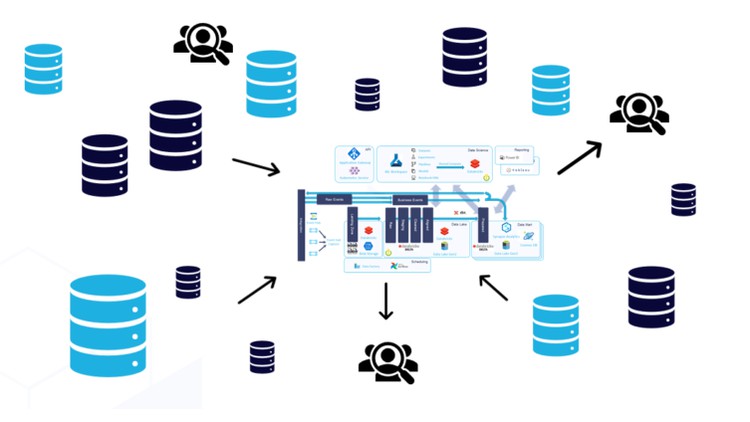
Master the Key Principles, Best Practices, and Real-World Applications of Data Mesh for Modern Data Architecture
What you will learn
Understanding the key principles and concepts of Data Mesh architecture.
Understanding the steps of implementation process of Data Mesh, including data governance and management.
Knowing the best practices and challenges in Data Mesh implementation.
Understanding the comparison between Data Mesh and other data architecture approaches.
Understanding key tools and technologies used in Data Mesh implementation.
Understanding how to integrate existing data systems into a Data Mesh.
Learning the benefits of Data Mesh, including improved data quality, increased data sharing, and streamlined data operations.
Understanding the importance of data cataloging and discovery in a Data Mesh architecture.
Grasping the key considerations in data governance and data management in Data Mesh.
Understanding the future of Data Mesh and emerging trends in data architecture.
Being equipped to make informed decisions on data strategy, architecture, and operations.
Becoming a well-rounded expert in Data Mesh and data architecture fundamentals
Preparing for job interviews related to Data Mesh and data architectures
Description
Are you looking for a course that provides a comprehensive understanding of Data Mesh and Data Architecture? This course provides a detailed overview of Data Mesh, its key principles, and its benefits, as well as a practical understanding of how it can be implemented in real-world scenarios.
Data Mesh is a new approach to data architecture that focuses on making data accessible and easily usable by the teams that need it. This course will cover the basics of Data Mesh, including its key principles and how it differs from other data architecture approaches. You will learn how to implement Data Mesh in your organization, including the steps involved in the implementation process, the tools and technologies used, and the best practices for a successful implementation.
The course also covers the important aspect of data governance in a Data Mesh architecture, including key considerations for data management and data cataloging and discovery. You will learn about the challenges and limitations of Data Mesh and how to overcome them.
Whether you are a data professional or simply seeking to enhance your data skills, this course is an essential resource for anyone looking to master the art of data architecture with data mesh.
Enrolling in this course also helps you prepare for job interviews specially in case you want to join an organization that implements data architectures such as data mesh.
I will be constantly updating the content with new sections based on the updates and evolving trends in data architecture and data mesh fields.
Content